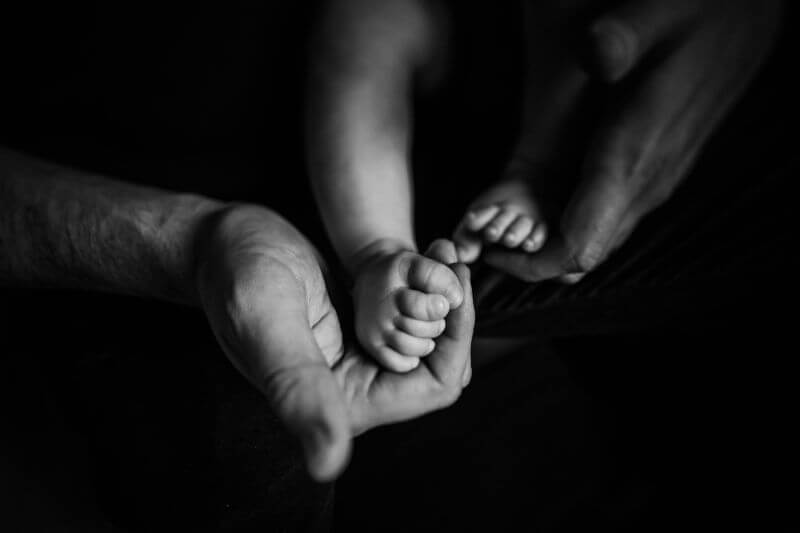Clubfoot or talipes is a lower limb disorder that begins in the womb. One or both of an unborn baby’s feet may turn inwards during the third month of the pregnancy – the first sign of clubfoot.
This issue is sometimes spotted during routine prenatal ultrasound scans. However, it’s more common to be diagnosed after the birth, when doctors can properly examine the baby’s feet.
What Clubfoot Look Likes
Clubfoot gives the foot a stubby appearance (hence the name), as the clubfoot illustration from KidsHealth.org shows.
Typically, the foot turns inwards to such an extent that the toes point to the opposite leg. It’s abnormally twisted at the ankle, leaving the sole facing backwards. The foot bones are misshapen, and the Achilles tendon is overly tight.
A Common Lower Limb Disorder
According to the NHS, roughly one in every 1,000 babies born in the UK has clubfoot. That means the condition is about as common as another congenital disorder, polydactylism (the phenomenon of being born with extra toes or fingers).
Clubfoot is similar to polydactylism in other ways too. For example, it’s as likely to affect one foot as it is both feet, and more boys are born with it than girls. (The clubfoot charity Steps Worldwide estimates that the condition is twice as common in boys.) As with polydactylism, clubfoot can be hereditary or appear out of the blue.
What Causes Clubfoot?
Babies might develop clubfoot due to structural problems with the lower limbs that affect the position in which their feet are held (for example, muscle weakness on the outer side of the leg or short tendons) or issues with the way nerves transmit messages. A serious underlying health condition such as spina bifida (a spine defect) could be to blame, though this is rare.
In most cases, the cause is unclear. But expectant parents will be relieved to learn that most babies born with the condition are otherwise healthy.
Affects a Child’s Ability to Walk
Thankfully, clubfoot isn’t painful for babies – after all, they’re not using their feet to carry their weight. But if untreated, the condition can create serious mobility issues as the infants get older.
As our London podiatrists know, feet are the foundation of movement. When they’re in an unnatural position, being active is difficult or even impossible. Someone attempting to walk with clubfoot will have a highly abnormal gait. They may force the outer side of their feet to carry their weight.
Clubfoot Treatment Begins Soon After Birth
To prevent mobility issues, treatment usually begins just a couple of weeks after the baby is born. Babies’ feet are soft and pliable, so it’s easier to correct the disorder early on.
The foot is gently manipulated to encourage it to assume a healthier position and placed in a series of casts (this is called the Ponseti method). The Achilles heel is loosened during a minor procedure. For several years, the infant will need specially designed shoes linked by a bar, called a clubfoot brace, to keep the foot in the right position.
This modern approach to treating clubfoot is far less invasive than previous treatment methods. If you were born with clubfoot during the 1990s or earlier, you’re likely to have undergone extensive operations to correct your foot’s position. Those operations are associated with foot problems in adulthood, such as pain and arthritis.
Shoes in Different Sizes May Be Required
Children who’ve been successfully treated for clubfoot can enjoy being active and wearing ordinary shoes.
Parents just need to bear in mind that a child with one corrected foot and one healthy foot may require shoes in different sizes, as the former is likely to be shorter and wider. Buying shoes from retailers that offer a foot-measuring service is the best approach.
How Our London Podiatrists Can Help
If your child has undergone clubfoot treatment, you’ll want to take extra special care of their feet. As podiatrists with a wealth of knowledge about children’s foot health, we’d be delighted to help. We can check your child’s foot function, offer footwear advice, treat verrucae and other nasties, and make sure their feet are in tip-top condition.
Our London podiatry services can also be beneficial for adults who are experiencing problems linked to the clubfoot operations they had during childhood. You can visit us for gait analysis, bespoke orthotics designed to enhance foot function, and more.
For expert help with clubfoot issues, book an appointment with Feet By Pody today.

